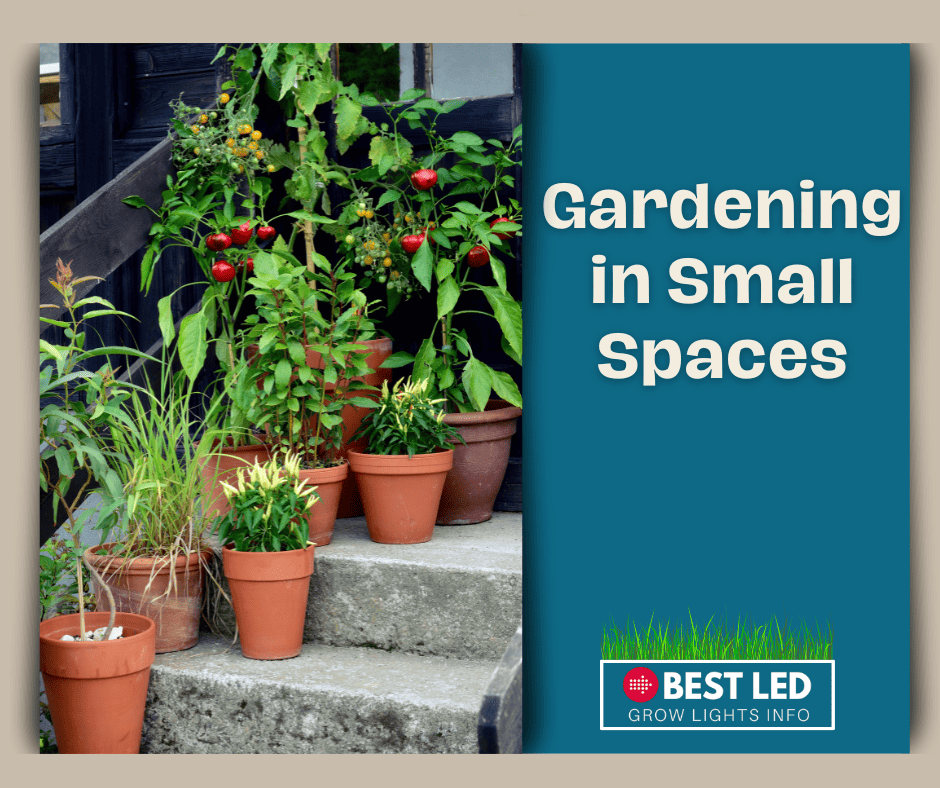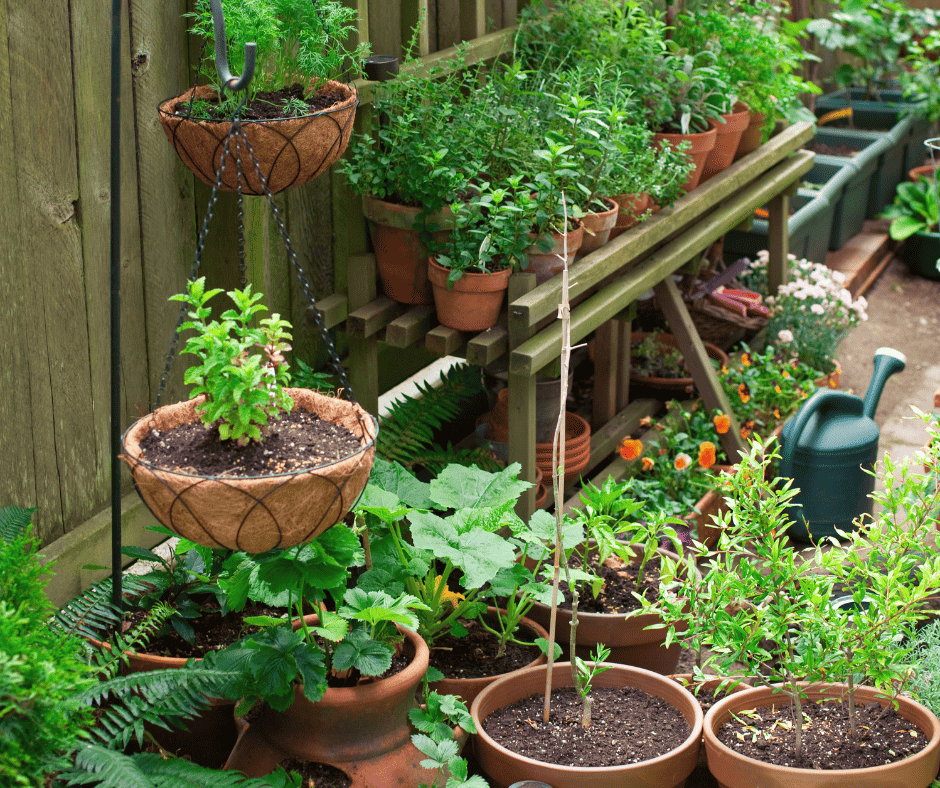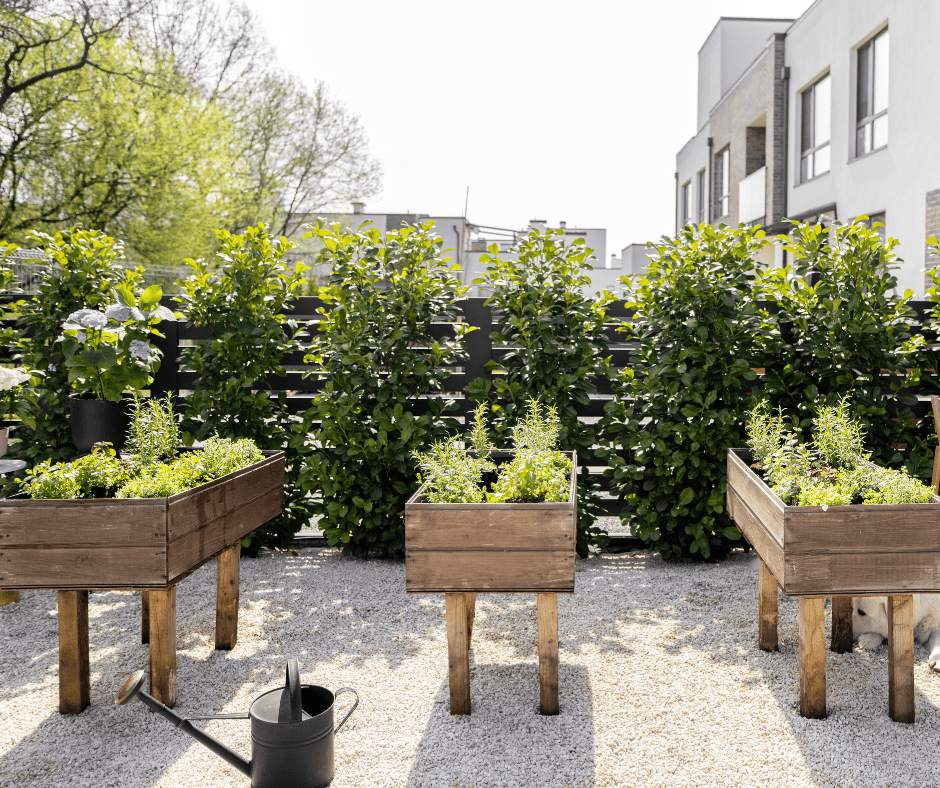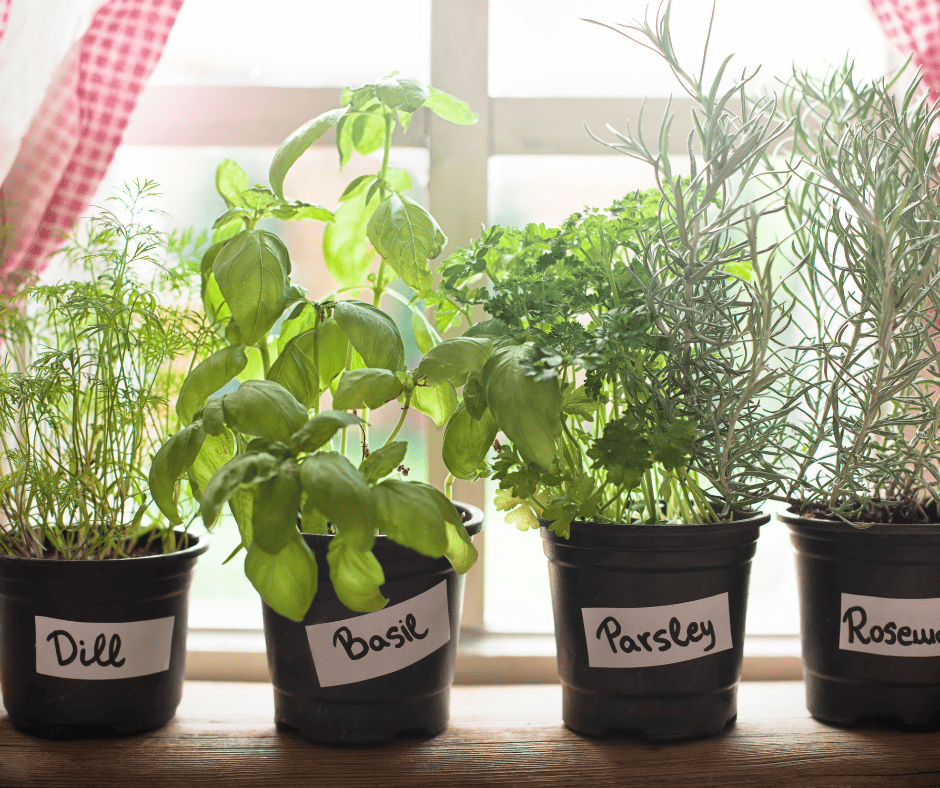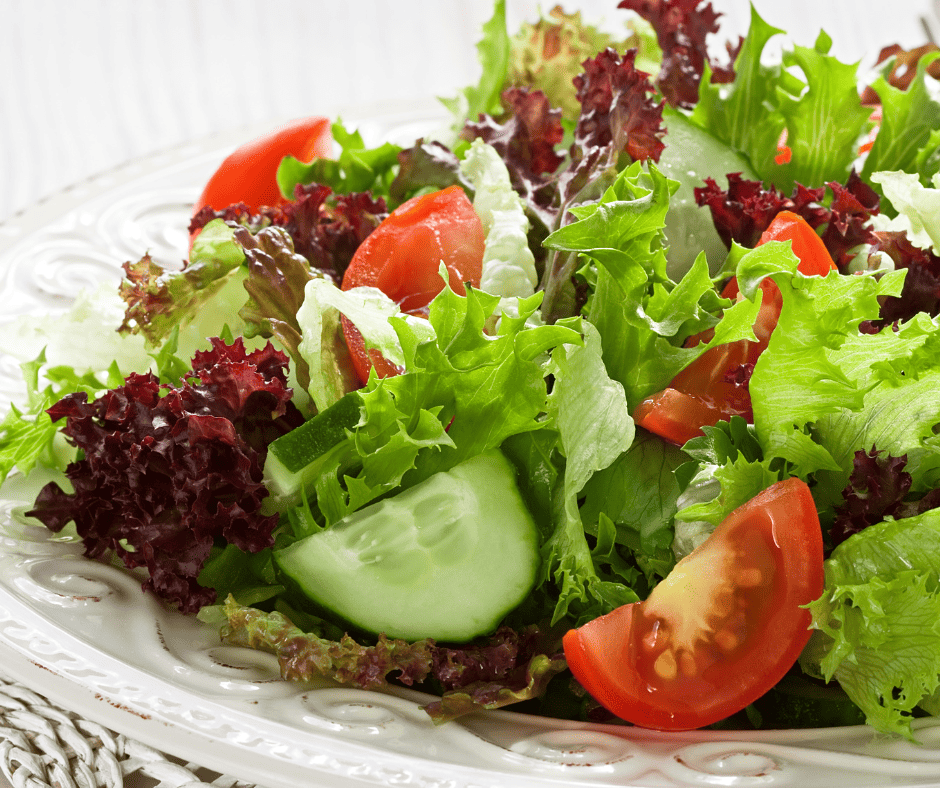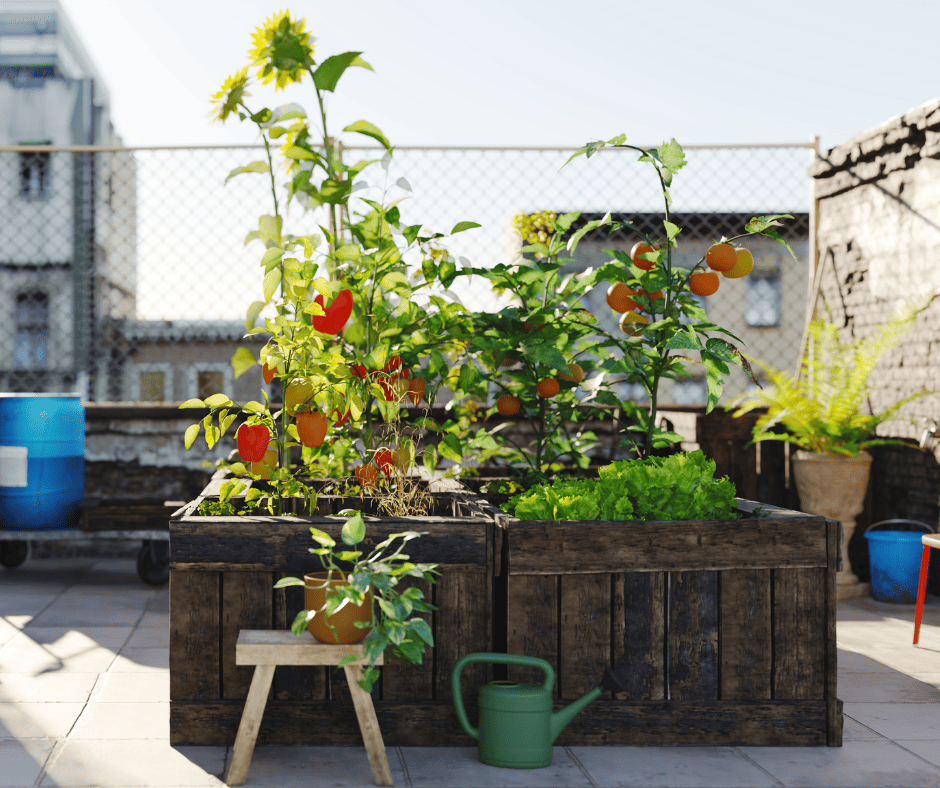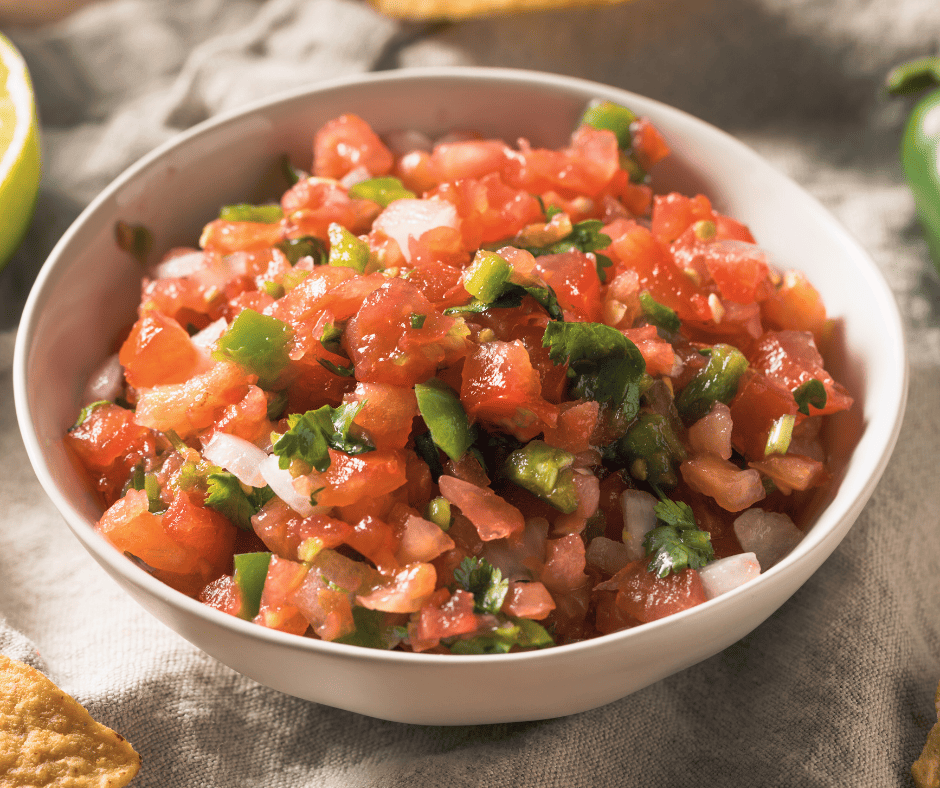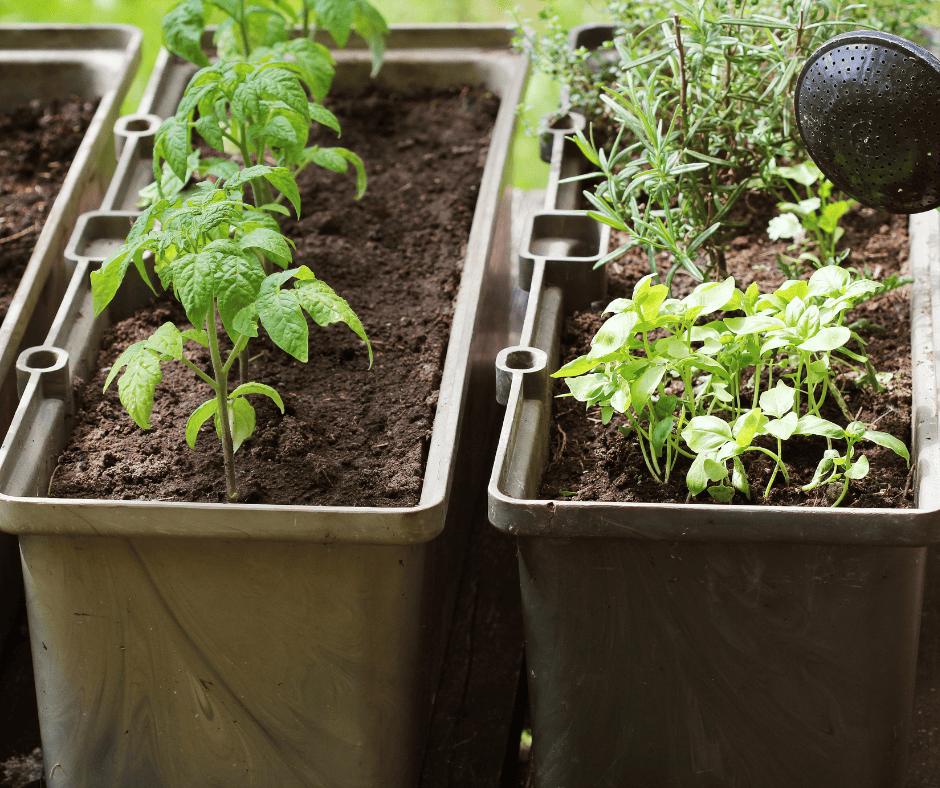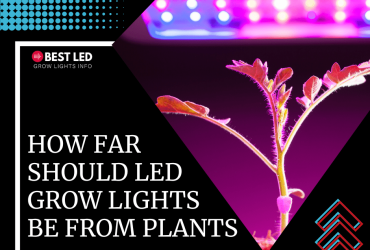Gardening in Small Spaces
When I began gardening, I had only a small space available to start. While I initially assumed that limited my options dramatically, I quickly learned that you could have a bountiful vegetable garden, plenty of fruits, and tons of fresh herbs if you use the right approach. Gardening in small spaces doesn’t have to limit your potential, either. If you want to maximize your limited room, here’s what you need to know.
Gardening in Small Spaces: What Options Are Available?
When most people think of gardening at home, they focus on digging into backyard soil. But that’s not the only option available. Choosing a container garden can let you cultivate a harvest on a porch, patio, balcony, or even inside your house. Window boxes and hanging baskets can also work well.
Vertical gardening is another space-saving option that doesn’t require a yard. Instead, you use a structure that allows you to take advantage of vertical space. There are kits available, or you can use a DIY approach and create one out of widely-available materials, such as PVC piping.
Raised garden beds can also be excellent spots for outdoor planting. With these raised beds, you can ensure that the type of soil present meets the needs of your plants. Plus, they functionally contain your garden and can make companion planting easier to get right.
Choosing Plants When Gardening in Small Spaces
When gardening in small spaces, you need a little restraint. While it’s tempting to pack every inch of available soil with vegetables, fruits, or herbs, plants need room to flourish. If they’re too compact, they compete for light and nutrients and might be more prone to disease. So, it’s better to give your plants space to breathe.
Additionally, you want to choose the right plants from the beginning. Some plants – like zucchini plants and pumpkins – take up a lot of room in a garden. A single zucchini vine can take up 10 square feet of space or more, so they aren’t the best choice unless you’re growing them vertically using a wall trellis or something similar.
By opting for smaller plants, you can have more variety. Plus, by using techniques like choosing fruits or vegetables that grow well together, you can prevent unhealthy competition between growing plants, allowing you to produce larger yields and reducing maintenance requirements.
What Vegetables Grow in Small Spaces?
Many vegetables grow incredibly well in small spaces. Tomatoes are a classic example, as growing tomatoes indoors works surprisingly well. But that’s not your only option. Some examples of veggies that don’t require much room and can thrive in outdoor or indoor container gardens (potentially with help from an LED grow light) include:
- Beets
- Carrots
- Leafy greens / salad greens (chard, lettuce, spinach, kale, etc.)
- Onions
- Peas
- Peppers
- Radishes
- Tomatoes
Additionally, cucumbers, squash, zucchini, and similar options can work in a small space garden if you’re growing them vertically. You can also look for compact and bush varieties of cucumber, as those only spread a few feet.
You can also explore beans that can grow on poles or trellises. Again, this prevents them from spreading out too much, making the most of your available room.
What Fruits Can You Grow in a Small Space?
You have plenty of options if you want to grow fruit in a small garden or containers to ensure your food harvest isn’t all vegetables. Small fruit trees are available thanks to dwarf varieties, which can give you access to apples, cherries, lemons, mandarins, peaches, pears, plums, and much more.
Vining fruits like kiwis or grapes can work for vertical gardens if your climate is right. The same is true of melons like cantaloupes or watermelons.
Many types of berries are also perfect for small gardens and container gardening. Here are just some of the berries you could try:
- Blueberries
- Currants
- Gooseberries
- Raspberries
- Strawberries
What Herbs Need Little Space to Grow?
A wide variety of herbs don’t need much space to thrive. Plus, by choosing the right ones, growing herbs is incredibly easy compared to some other plants. You can also keep them in small pots or containers, allowing you to shift their position if they need full sun exposure and you don’t have a suitable window.
Here are some herbs that are popular for gardening in small spaces or small containers too:
- Basil
- Chives
- Cilantro
- Dill
- Oregano
- Marjoram
- Parsley
- Rosemary
- Sage
- Thyme
Benefits of Choosing Fast-Growing Crops
When gardening in a small space, sticking with fast-growing crops is your best bet. It’ll allow you to get more yield from your mini-garden, giving you extra value from your investment in seeds, plants, time, and effort.
Microgreens can be ready to harvest in two to three weeks if you’re starting from seeds. Radishes usually require about three weeks. Arugula is typically good to go in three to seven weeks, while lettuce takes only four to six weeks.
Generally, you want to find plants that are ready to harvest in about eight weeks or less. If you also choose plants that you can harvest from multiple times or plant in succession, you can create a garden that’s consistently producing a bounty during the growing season.
Growing Fruits and Vegetables in Containers
When you don’t have a lot of room, growing fruits and vegetables in containers gives you more versatility than sticking to a backyard. Plus, it lets you create a garden even if you don’t have a yard at all. Containers can go on patios, porches, or balconies. You can also keep the containers indoors if you have indoor space available.
When choosing containers, you want to make sure that they’re deep enough to support strong root development. Having proper drainage is also essential. Instead of getting pre-drilled containers, consider using a solid container you can drill into for drainage holes. Place the holes a few inches from the bottom, then create a base for the soil using a high-drainage material, like chunky gravel. Add a layer of weed-blocking fabric and pour an organic soil designed for your plant type on top.
You may need to use a mix of natural sunlight and LED grow lights for lighting. Adding LED grow lights ensures your plants get the lighting they need, even if you don’t have an ideal window. Plus, it means you don’t have to shift the containers around to provide the fruits and vegetables with enough light, making it less labor-intensive.
Fertilizer needs can vary depending on the type of plant you’re growing. As a result, you’ll want to find an organic fertilizer that meets the needs of your fruits, vegetables, and herbs to get the best yields.
Filling Urban Gardens with Herbs
If you’re incredibly limited on space, consider an urban herb garden. You can use small pots on a windowsill or window boxes to give you a reliable source of fresh herbs. Hanging baskets also work well for herb gardens; you can hang them indoors or on a balcony with relative ease.
One thing that’s important to remember is that you don’t have to hang window boxes outside. Many of them can position quite nicely on the interior instead. So, consider this approach if you want to avoid keeping them outdoors.
Companion Planting for Space Efficiency
Companion planting is a technique that involves planting specific vegetables and herbs together to promote health and avoid competition. Different plants have unique needs, and when the right ones are placed together, they effectively support one another.
Plus, companion planting allows you to fit different types of vegetables and herbs in the same space in a compact garden. As a result, you can get a wider variety of fresh produce even if you don’t have much room.
Here are some common combinations for companion planting:
- Broccoli and onions
- Carrots and rosemary
- Lettuce and chives
- Tomatoes and basil
Succession Planting for Fresh Veggies All Season
Succession planting – also referred to as successive planting – is a technique that lets you extend your harvest by planting crops in a way that staggers their maturity date, and a great idea for a small space. As a result, it helps you ensure that you have access to fresh vegetables consistently throughout the growing season.
There are several approaches available for succession planting. First, you can use the same vegetable and stagger when they’re planted. They’ll mature at different times by spacing them out every two to four weeks, giving you small yields multiple times instead of one large one.
Second, you can use multiple vegetables to offset ones with shorter growing seasons. For example, peas don’t have a long growing season, so you can flip it out with another option, like lettuce, if you’d like.
Alternatively, you can use several varieties of the same plant, choosing ones with early, mid, and late-season maturities and planting them depending on the time of year. Many types of pole beans have different timing when it comes to maturity, making them a prime example. However, they aren’t the only ones, so feel free to explore your option if you want to mix things up within a category of favorite plants during the growing season.
Enjoyed this post? Pin it!
